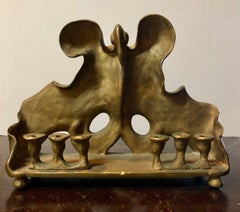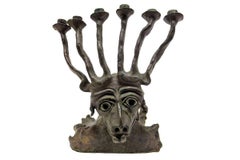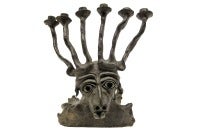Moshe Oved
Early 20th Century Aesthetic Movement Figurative Sculptures
Bronze
Early 20th Century Aesthetic Movement Figurative Sculptures
Bronze
Recent Sales
1940s Abstract Sculptures
Bronze
Early 20th Century Aesthetic Movement Figurative Sculptures
Bronze
Early 20th Century Aesthetic Movement Figurative Sculptures
Bronze
Mid-20th Century Aesthetic Movement Figurative Sculptures
Bronze
People Also Browsed
21st Century and Contemporary Portuguese Modern Sofas
Velvet, Fabric, Wood
Antique Late 19th Century Iraqi Religious Items
Silver
21st Century and Contemporary American Art Deco Sofas
Fabric
20th Century Hong Kong Chinoiserie Desks
Leather, Wood
Antique 15th Century and Earlier American Natural Specimens
Stone
Vintage 1950s English Victorian Fireplaces and Mantels
Iron
Antique 19th Century Russian Sterling Silver
Silver
Vintage 1950s English Victorian Fireplaces and Mantels
Iron
Vintage 1950s Israeli Sterling Silver
Silver
Antique 19th Century Spanish Candlesticks
Ceramic
Vintage 1970s Italian Beds and Bed Frames
Brass, Steel
Early 20th Century French Art Deco Daybeds
Leather, Wood
21st Century and Contemporary French Modern Side Tables
Carrara Marble, Wrought Iron
21st Century and Contemporary Italian Modern Vases
Resin
Antique Late 19th Century Doors and Gates
Stained Glass, Pine
Antique 1890s British Books
Paper
Finding the Right Figurative-sculptures for You
Figurative sculptures mix reality and imagination, with the most common muse being the human body. Animals are also inspirations for these sculptures, along with forms found in nature.
While figurative sculpture dates back over 35,000 years, the term came into popularity in the 20th century to distinguish it from abstract art. It was aligned with the Expressionist movement in that many of its artists portrayed reality but in a nonnaturalistic and emotional way. In the 1940s, Alberto Giacometti — a Swiss-born artist who was interested in African art, Cubism and Surrealism — created now-iconic representational sculptures of the human figure, and after World War II, figurative sculpture as a movement continued to flourish in Europe.
Lucian Freud and Francis Bacon were some of the leading figurative artists during this period. Artists like Jeff Koons and Maurizio Cattelan propelled the evolution of figurative sculpture into the 21st century.
Figurative sculptures can be whimsical, uncanny and beautiful. Their materials range from stone and wood to metal and delicate ceramics. Even in smaller sizes, the sculptures make bold statements. A bronze sculpture by Salvador Dalí enhances a room; a statuesque bull by Jacques Owczarek depicts strength with its broad chest while its thin legs speak of fragility. Figurative sculptures allow viewers to see what is possible when life is reimagined.
Browse 1stDibs for an extensive collection of figurative sculptures and find the next addition to your collection.



